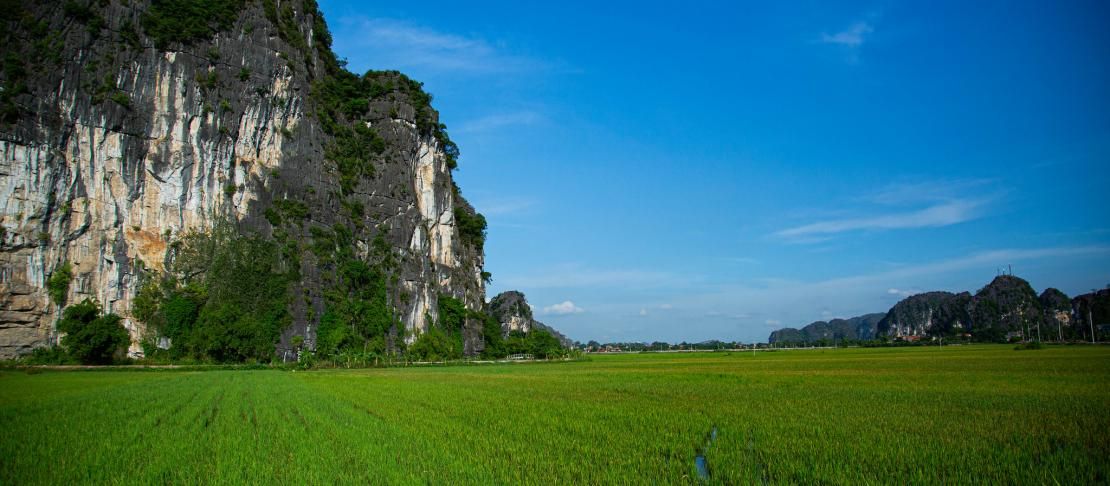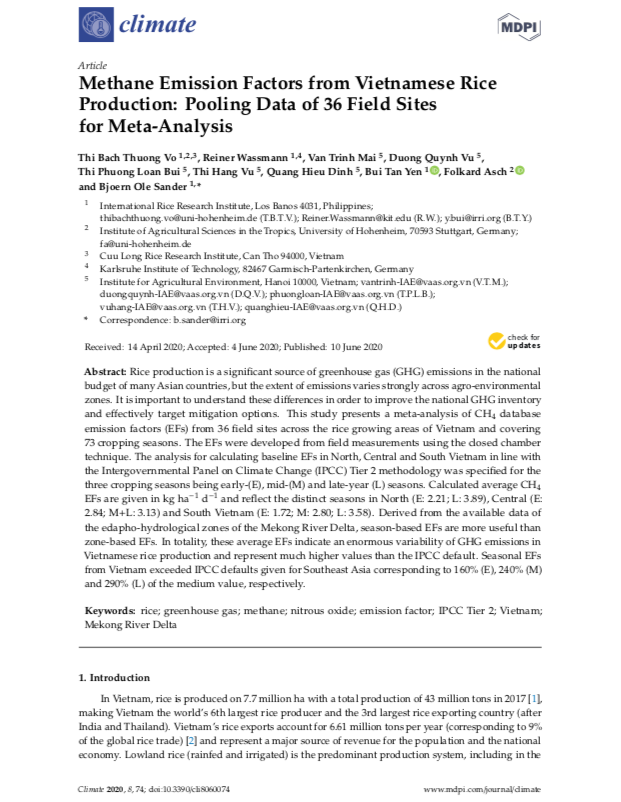Why update emission factors for irrigated rice in Vietnam?

Rice production accounts for a significant portion of many Asian countries’ greenhouse gas (GHG) emissions, and Vietnam is one of the world’s largest rice producers. To meet the targets set out in its Nationally Determined Contribution (NDC) and to maintain transparency in National Communications (NC), Vietnam assesses the spatial variation of emissions across its rice-producing regions.
Emission factors (EFs) are used to estimate total emissions associated with the area of rice production; many countries use the guidelines provided by the Intergovernmental Panel on Climate Change (IPCC).
Click here to read the article |
IPCC default EFs are based on global averages and do not consider seasonal or regional variations in climate, which can lead to over- or under-estimations of seasonal emissions. Policymakers and researchers are getting a picture of emissions on the ground, but how do we increase the resolution to allow for rapid assessment of hotspots and identify practices with the highest mitigation potential?
A recent study, supported by the Vietnamese Ministry of Natural Resources and Environment (MONRE), CGIAR Research Program on Climate Change, Agriculture and Food Security (CCAFS), and the Climate and Clean Air Coalition (CCAC), has compiled a comprehensive database of methane emissions from lowland rice production in Vietnam.
Addressing generalized emission factors
Irrigated rice is the predominant production system in Vietnam; it is a major source of the country’s carbon footprint. Methane is the predominant GHG emitted from rice fields and emissions vary across space and time with soil type and climate. Vietnam has up to three cropping seasons throughout the year; each experience different climates across regions of the country.
The study found a significant variation of rice emissions across seasons and landscapes. Therefore, it is advantageous for EFs to be determined for cropping seasons and systems separately instead of one annual EF for the whole country. The variation in Vietnam’s climate and soil conditions means that GHG measurements could be taken across regions and seasons to establish a more representative database. More emission data are needed to calculate baseline emissions and quantify mitigation potentials of different management practices across regions and seasons.
The results from our study broaden the database on Emission Factors in width and depth by recording emissions at different sites within a given region and by distinguishing among seasons."
Björn Ole Sander, Senior Scientist, International Rice Research Institute (IRRI) and author
The more we know, the smarter we plan
Emission factors specific to time and space would improve GHG inventories, like Vietnam’s, to a more substantiated Tier 21 approach. More emission data would also help target practices with the highest mitigation potential.
With seasonal emission factors, policymakers can identify suitable practices with high potential to mitigate GHG emissions. Moreover, baseline emission data can narrow emission hotspots and make national planning and policy decisions more transparent.
We see this study as a step to bridge the gap from scientific information on GHG emissions to reach policy documents under the UNFCCC process."
Dr. Mai Van Trinh, Director General of Institute for Agricultural Environment (IAE), and author
A better understanding of when and where emissions are highest allows policymakers to target these times and places to substantially reduce emissions.
Read more:
- Journal article: Methane Emission Factors from Vietnamese Rice Production: Pooling Data of 36 Field Sites for Meta-Analysis
- Journal article: Measuring GHG Emissions from Rice Production in Quang Nam Province (Central Vietnam): Emission Factors for Different Landscapes and Water Management Practices
- Journal article: Effects of water management on greenhouse gas emissions from farmers' rice fields in Bangladesh
- Blog: What can Vietnamese farmers grow aside from rice?
- Blog: Climate-smart metrics for irrigated rice


